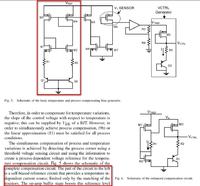twlin1
Member level 1

I just read the paper "Process and Temperature Compensation in a 7-MHz CMOS Clock Oscillator" by Krishnakumar Sundaresan. There is a cicuit as attached which is temperature independent current source. But it looks like a PTAT current source in some kind of bandgap structure.Can somebody explain "temperature independent current source" to me? Thanks.



